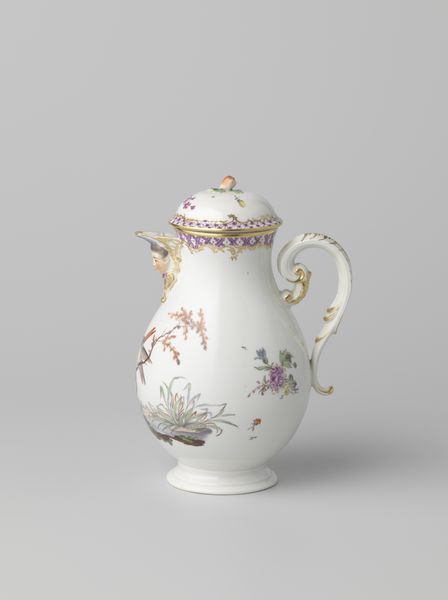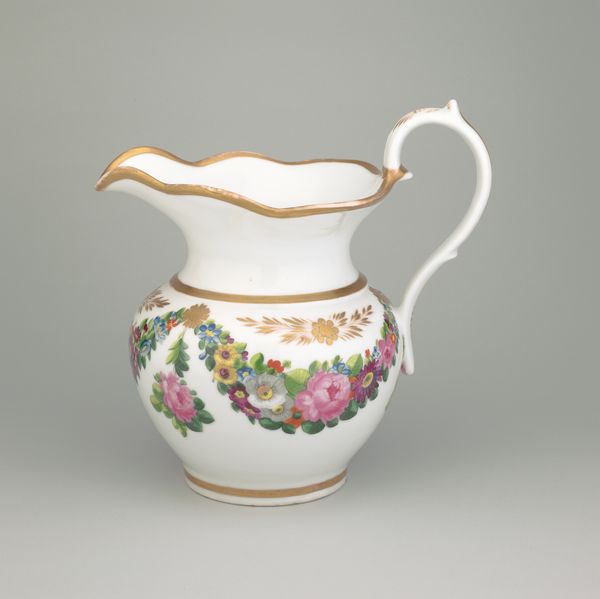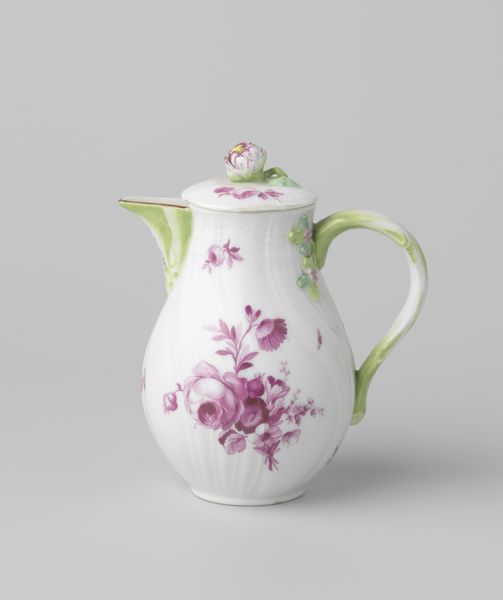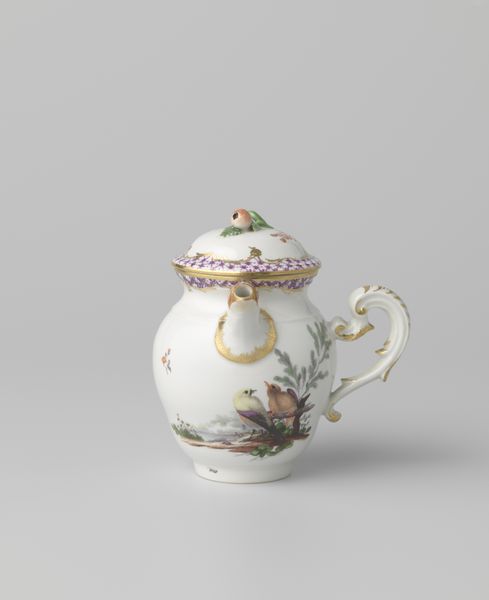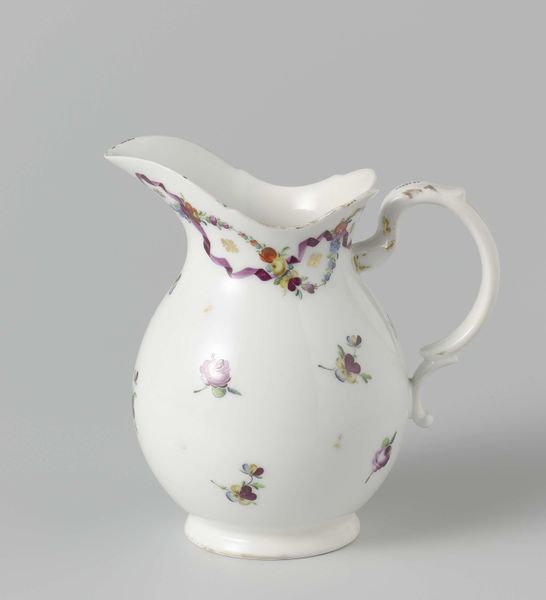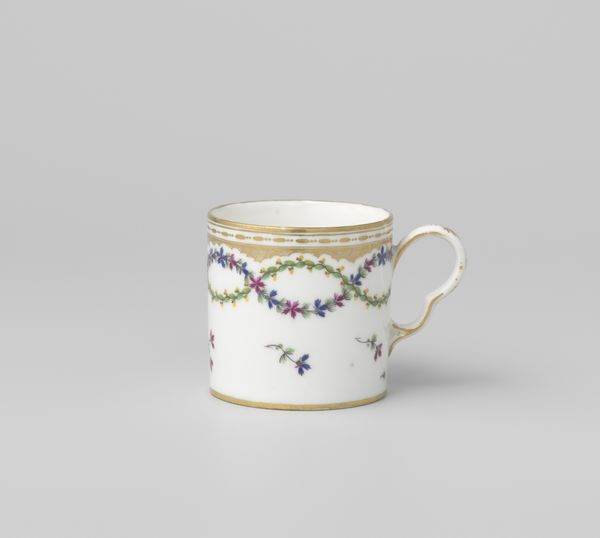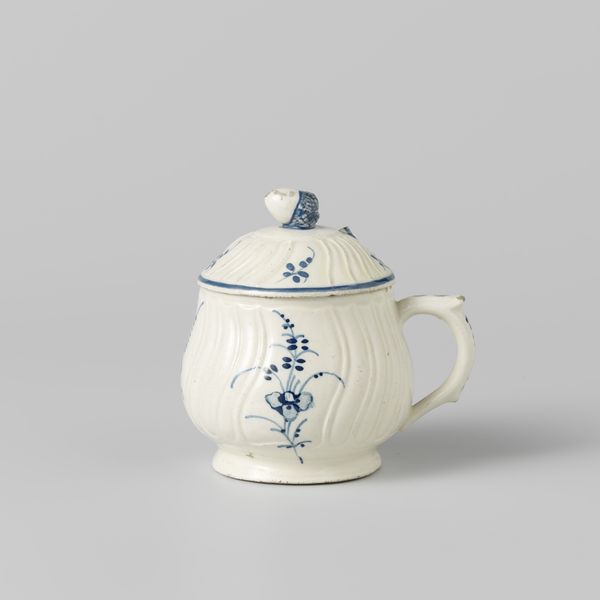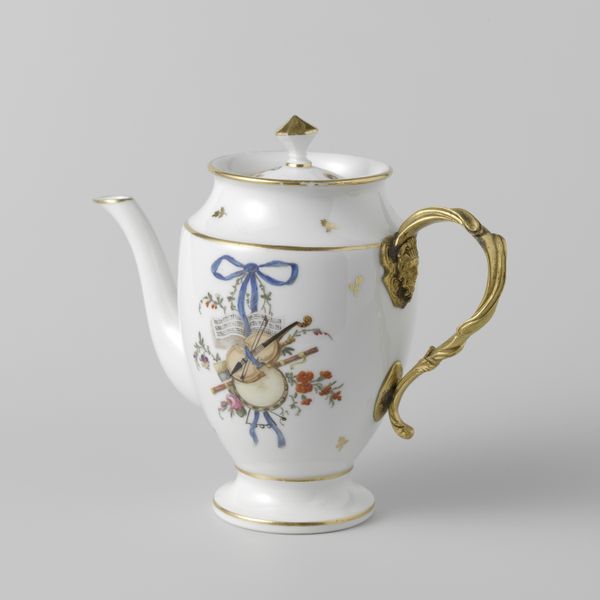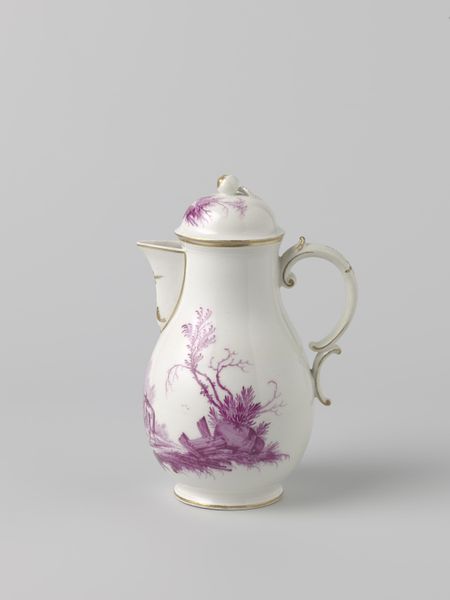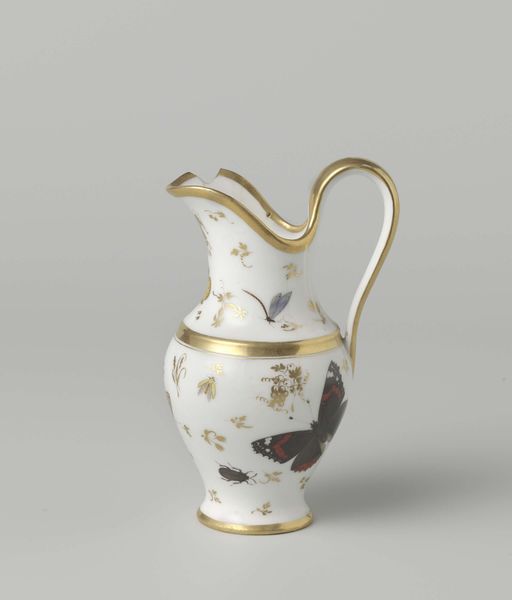
Ewer with floral scrolls and flower sprigs c. 1775 - 1799
0:00
0:00
fabriekdominiquedenuelle
Rijksmuseum
Dimensions: height 31.2 cm, width 13.7 cm, diameter 18.2 cm, diameter 13.5 cm, width 23.5 cm
Copyright: Rijks Museum: Open Domain
Curator: This is an exquisite porcelain ewer, crafted circa 1775 to 1799 by Fabriek Dominique Denuelle, here at the Rijksmuseum. Its elegant rococo style immediately captures your attention. Editor: Rococo, indeed! It feels almost frivolous, doesn't it? So light, so delicate, like something meant to be admired, not used. Curator: Exactly. Let’s consider the materials, this is porcelain, after all, a material whose value at this time extended beyond utility. The dominance of white as background and accentuating the painted details demonstrates the artistry associated with this piece. It makes me think about the process of porcelain production, the social dynamics between its manufacturer, Dominique Denuelle, and their consumer-base. Editor: I see this ewer within its historical moment. Porcelain during this period represented luxury, and it's not accidental that its market value flourished amid rising inequality in pre-revolutionary Europe. Its presence on a table symbolized status, shaping desires around elite customs. Curator: The floral scrolls and flower sprigs, while seemingly simple, speak volumes about the broader culture of collecting and display at that time. Even in these minor decorations, one glimpses at the broader forces of global trade introducing motifs which might become fashionable among the consumer. Editor: It definitely projects an aura of aristocratic privilege. This ewer embodies an interesting dilemma. On one hand, it represents the skill and artistry involved in manufacture. At the same time, it perpetuates ideals celebrating exclusivity and wealth, influencing consumption habits. Curator: Absolutely. And that inherent tension between craft, class and societal structures turns even a small vessel into a powerful reflector of history and economic factors. Editor: Looking closely at the gilded details and refined floral decorations reveals even deeper class divisions reflected within decorative objects themselves. It encourages discussions on value judgements. Curator: True, seeing art through historical lenses reminds us it has power beyond inherent worth to prompt such critical introspection. Editor: Right, seeing an everyday object like this encourages dialogue, rather than letting them exist passively in a museum case.
Comments
No comments
Be the first to comment and join the conversation on the ultimate creative platform.
